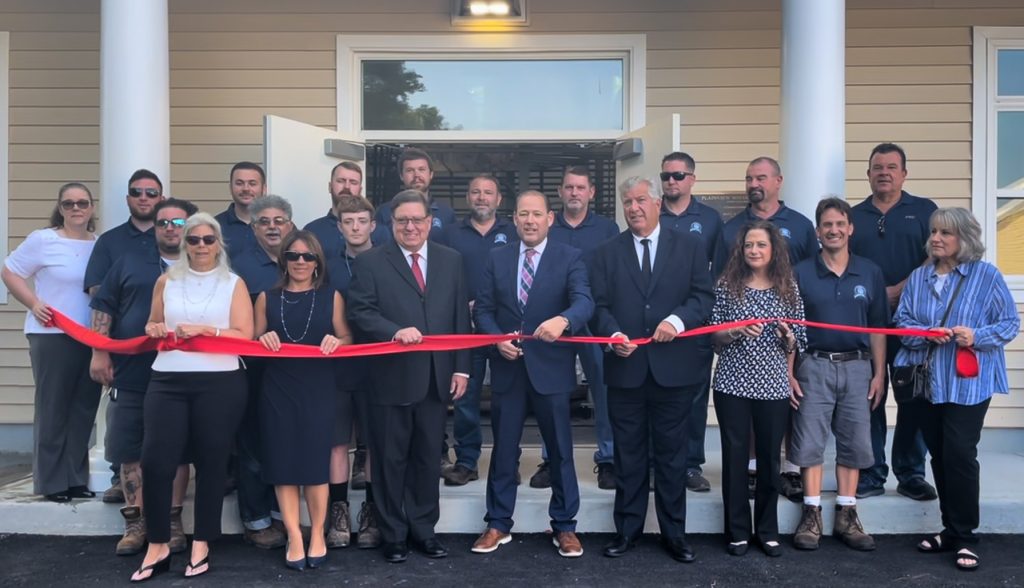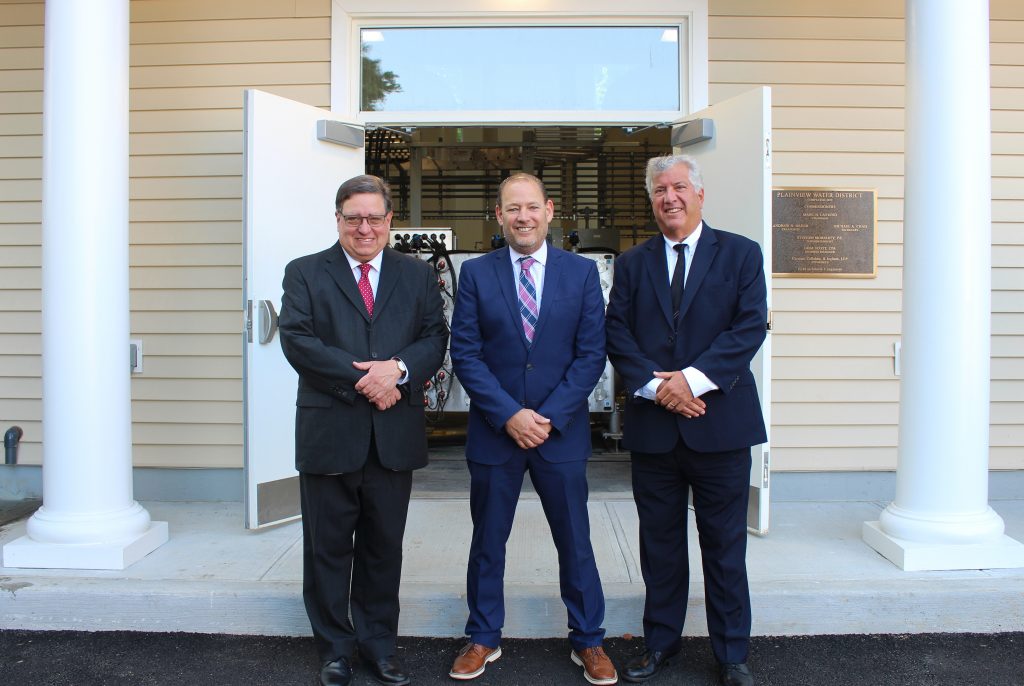New Treatment System Specifically Designed to Remove 1,4-Dioxane, PFOA & PFOS

at Plant 2 Ribbon Cutting Ceremony
The Plainview Water District (PWD) recently held a ribbon-cutting ceremony to unveil the newly completed, state-of-the-art treatment facility that was specifically designed to remove emerging contaminants 1,4-dioxane, PFOA and PFOS from the community’s drinking water. Plant No. 2, located on Donna Drive, represents a $4.2 million investment into the community’s drinking water infrastructure that is capable of producing up to two million gallons of high-quality drinking water each and every day. The Plainview Water District is viewed as a leader in water treatment and has successfully put more Advanced Oxidation Process (AOP) systems in place than any other water supplier on Long Island.
“This ceremony marks yet another major milestone for the
Plainview Water District and our mission to continue delivering high-quality
water to the POB community,” said PWD Commissioner Marc Laykind. “This facility
was operational in record time, well before the new water quality regulations
went into effect, and that was only made possible by the dedication of the hard
work by our staff and engineering team. With its permanent, year-round
capabilities, this facility will bolster our ability to continue providing
water that meets and exceeds all water quality standards.”
The facility was initially designed to repurpose treatment equipment previously purchased to complete the temporary treatment system installed in 2020. In August 2020, the New York State Health Department finalized regulations establishing maximum contaminant levels (MCLs) for emerging compounds 1,4-dioxane, PFOA and PFOS. Construction began in November 2021 to redevelop the temporary treatment plant into a year-round facility to treat for these contaminants. This ensured the District remained ahead of the regulatory timelines for emerging contaminants established by the New York State Department of Health, without the need for an extension to remain in compliance.
“This plant was strategically transformed from a temporary facility to a permanent facility to create a long-standing plant that will produce billions of gallons of the highest-quality drinking water over the next couple of decades,” said PWD Commissioner Andrew Bader. “By continuing to invest in our infrastructure, we are investing in our community for generations to come. The District has put in tremendous effort and resources to create this facility and being able to see the astonishing outcome has truly been remarkable.”
The treatment technology required to remove 1,4-dioxane is called the Advanced Oxidation Process (AOP). This treatment system works by adding a small amount of an oxidant into the water—in this case hydrogen peroxide—that passes through an ultraviolet light reactor destroying the 1,4-dioxane molecules. From there, the water then travels through Granular Activated Carbon (GAC) filtration—industrial-sized carbon filters—so any remaining detections of the oxidant as well as other volatile organic compounds can be removed before water goes through the rest of the treatment and delivery process. This treatment duo, which is also effective at removing PFOA and PFOS, is the only method approved by state and local health departments to remove 1,4-dioxane.
“It was a noteworthy experience to be able to take part in the celebrations for this facility, particularly after getting to witness the PWD’s staff and engineer’s great efforts over the past seven months,” said PWD Commissioner Michael Chad. “Seeing just part of the hard-work and time that went into the creation and execution of this project was remarkable. We thank all those who had a hand in developing this great facility for our community.”
For further information, or if you have any questions, please call the District at 516-931-6469 email info@plainviewwater.org or visit www.plainviewwater.org. Residents can also sign up to receive information by submitting their email address through the District’s homepage or following them on Facebook in order to stay up-to-date with District activities and initiatives.
###


